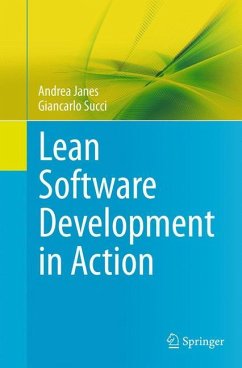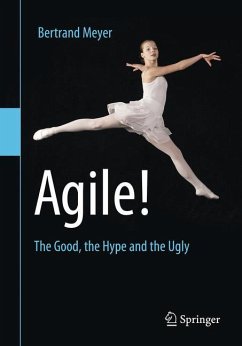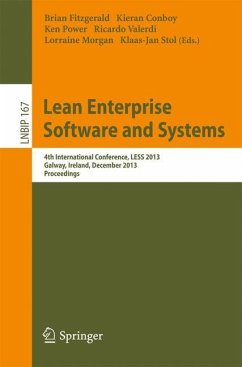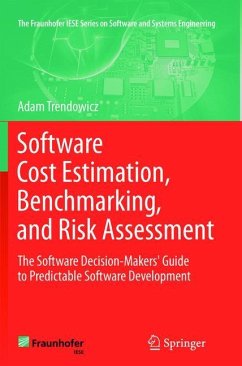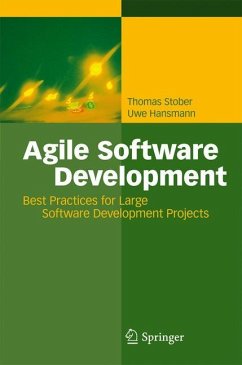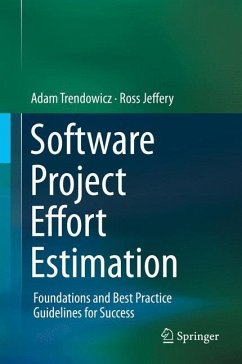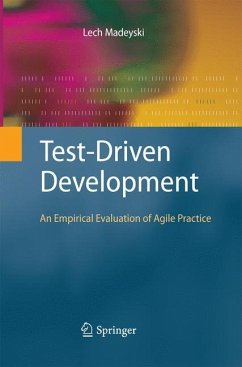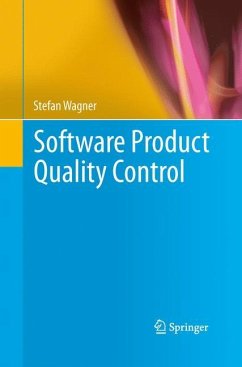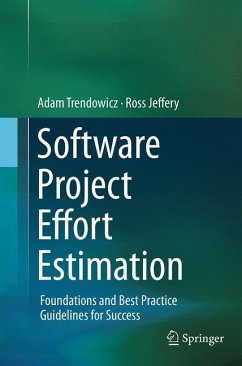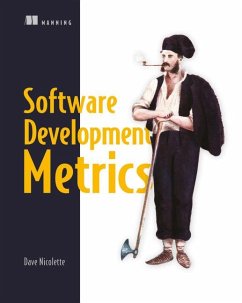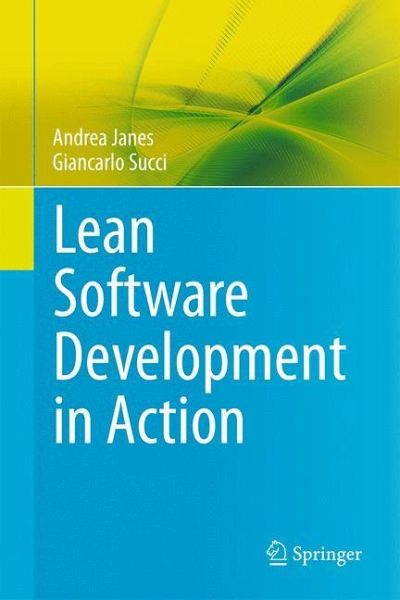
Lean Software Development in Action
Versandkostenfrei!
Versandfertig in 6-10 Tagen
38,99 €
inkl. MwSt.
Weitere Ausgaben:

PAYBACK Punkte
19 °P sammeln!
This book illustrates how goal-oriented, automated measurement can be used to create Lean organizations and to facilitate the development of Lean software, while also demonstrating the practical implementation of Lean software development by combining tried and trusted tools.In order to be successful, a Lean orientation of software development has to go hand in hand with a company's overall business strategy. To achieve this, two interrelated aspects require special attention: measurement and experience management. In this book, Janes and Succi provide the necessary knowledge to establish "Lea...
This book illustrates how goal-oriented, automated measurement can be used to create Lean organizations and to facilitate the development of Lean software, while also demonstrating the practical implementation of Lean software development by combining tried and trusted tools.
In order to be successful, a Lean orientation of software development has to go hand in hand with a company's overall business strategy. To achieve this, two interrelated aspects require special attention: measurement and experience management. In this book, Janes and Succi provide the necessary knowledge to establish "Lean software company thinking," while also exploiting the latest approaches to software measurement. A comprehensive, company-wide measurement approach is exactly what companies need in order to align their activities to the demands of their stakeholders, to their business strategy, etc. With the automatic, non-invasive measurement approach proposed in this book, even small and medium-sized enterprises that do not have the resources to introduce heavyweight processes will be able to make their software development processes considerably more Lean.
The book is divided into three parts. Part I, "Motivation for Lean Software Development," explains just what "Lean Production" means, why it can be advantageous to apply Lean concepts to software engineering, and which existing approaches are best suited to achieving this. Part II, "The Pillars of Lean Software Development," presents the tools needed to achieve Lean software development: Non-invasive Measurement, the Goal Question Metric approach, and the Experience Factory. Finally, Part III, "Lean Software Development in Action," shows how different tools can be combined to enable Lean Thinking in software development.
The book primarily addresses the needs of all those working in the field of software engineering who want to understand how to establish an efficient and effectivesoftware development process. This group includes developers, managers, and students pursuing an M.Sc. degree in software engineering.
In order to be successful, a Lean orientation of software development has to go hand in hand with a company's overall business strategy. To achieve this, two interrelated aspects require special attention: measurement and experience management. In this book, Janes and Succi provide the necessary knowledge to establish "Lean software company thinking," while also exploiting the latest approaches to software measurement. A comprehensive, company-wide measurement approach is exactly what companies need in order to align their activities to the demands of their stakeholders, to their business strategy, etc. With the automatic, non-invasive measurement approach proposed in this book, even small and medium-sized enterprises that do not have the resources to introduce heavyweight processes will be able to make their software development processes considerably more Lean.
The book is divided into three parts. Part I, "Motivation for Lean Software Development," explains just what "Lean Production" means, why it can be advantageous to apply Lean concepts to software engineering, and which existing approaches are best suited to achieving this. Part II, "The Pillars of Lean Software Development," presents the tools needed to achieve Lean software development: Non-invasive Measurement, the Goal Question Metric approach, and the Experience Factory. Finally, Part III, "Lean Software Development in Action," shows how different tools can be combined to enable Lean Thinking in software development.
The book primarily addresses the needs of all those working in the field of software engineering who want to understand how to establish an efficient and effectivesoftware development process. This group includes developers, managers, and students pursuing an M.Sc. degree in software engineering.





